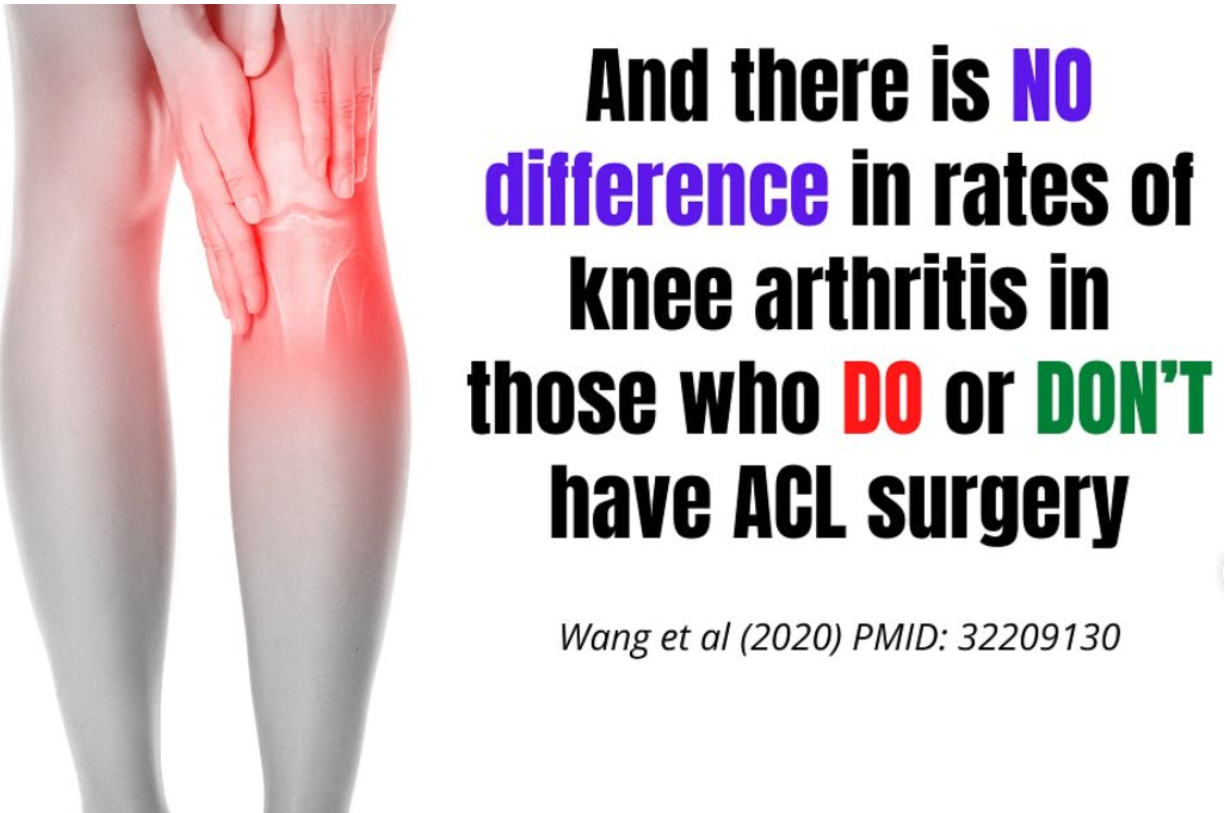ACL Tears: The Truth About Recovery WITHOUT Surgery
 By Shane Dowd , CES, CMP
By Shane Dowd , CES, CMP
ACL tears. The bane of every runner, athlete, gym-goer, and movement enthusiast's existence…
ACL tears are among the most frustrating knee injuries and have long been seen by athletes as a one-way ticket to surgery.
But, new research suggests that if you're patient, disciplined, and train smart, recovery WITHOUT surgery might be within reach.
How? Let’s dive in…
Traditionally, Surgery Was Seen as the Only Option
So what the heck is the ACL anyway?
The anterior cruciate ligament (ACL) helps stabilize your knee and prevents the tibia (shinbone) from slipping in front of the femur (thigh bone).
Quick changes in direction, sudden stops, or direct hits—especially in sports like soccer, basketball, skiing, and football—can tear or snap the ligament.
Historically, doctors believed a torn ACL could NOT heal on its own, so they recommended surgery.
But even as far back as 1996 we’ve known that fully ruptured ACLs can heal on their own.

So why, then do Doctors and surgeons keep recommending ACL surgery? Well, one reason is… ACL repair surgery is BIG business, generating around $7 billion annually.

New Findings Challenge Surgical Necessity
Recent research challenges this big business surgery-money-machine.
A study published in the British Journal of Sports Medicine in June found that 90% of ACL tears in 80 participants showed signs of healing on MRI after following a new bracing protocol.

Most of these patients were able to return to their sport a year later with good knee stability and function.
Bracing Protocol: How It Works
Participants in the study wore a brace for a month that kept their knees at a 90-degree angle, pulling the torn ends of the ACL closer together to help them fuse.
Stephanie Filbay, lead author of the study and senior research associate at the University of Melbourne, said this position increases the chances of healing.
Along with the bracing protocol, they did physical therapy over the next two months while gradually increasing their range of motion with the brace. After three months, the brace was removed, and MRIs showed most ACLs repaired themselves.
“We have now braced over 430 patients in clinical practice, with similar high rates of ACL healing and excellent patient outcomes,” Filbay said.
Expert Opinions: To Cut or Not to Cut?
“This study could be a game changer,” says Dr. Lyle Micheli, an orthopedic surgeon at Boston Children’s Hospital and Harvard Medical School.
Dr. Maryam Saidy, a 40-year-old surgeon with Kaiser Permanente, wasn’t given a non-surgical option when she tore her ACL in 2008.
She ended up with scar tissue, arthritis, and a limp. A decade later, she tore the same ACL again but tried physical therapy instead. Three months later, she was back on the basketball court, hooping it up.
How did this surgeon feel about her nonsurgical choice?
“I’m perfectly happy with my knee,” she said.
My Personal Struggle with Knee Injuries
Now, let me share a personal story. I've had my fair share of knee injuries, too.
Since I’ve been an athlete my whole life and have done a lot of running, jumping, and lifting weights, I’ve had more than my fair share of knee pain.
First, there was the runner's knee and jumper's knee. But the real kicker came when I almost severed my knee in half after a nasty fall.

The pain was excruciating, and I was left wondering if I'd ever be able to train or compete again.
I thought I might need surgery, but I knew there was another way, since I’d already overcome my hip impingement and labral tears without surgery.
So, I turned to smart strength training and mindful mobility work.
Here’s what worked for me:
- Smart Strength Training: I focused on exercises that strengthened my quadriceps, hamstrings, and glutes without putting too much strain on my knees.
- Mindful Mobility Work: Incorporating targeted tissue work, stretches that didn’t strain my knee and controlled movements helped me regain flexibility and prevent stiffness.
Over time, I noticed significant improvements in knee stability and reduced pain. With patience, persistence, and discipline, I was back on my feet faster than anyone expected.
The Long-Term Risks and Benefits
In the past, research showed that 50% of patients who have surgery still develop arthritis within 12 to 14 years.
Not great, but supposedly, without the surgery, the chance of getting arthritis was worse.
But, new research has shown that there is no difference in rates of knee arthritis in people who DO or DON’T have ACL surgery.

A Balanced Approach
So what’s the takeaway here?
If you’re dealing with an ACL tear, there’s no rush to get surgery.

First, talk to your doctor about all the options—surgery, bracing, physical therapy—and decide what works best for you.
Because, ultimately, discipline, patience, and smart training might just help you overcome this challenge without going under the knife.
Taking the Next Step with My 45-Day "Runner's Knee" Program
If you're struggling with knee pain of any kind, from runner's knee, jumper's knee, or any other knee issue, we’ve got a 45-day "Runner's Knee" program designed to help you recover and get back on your feet. It’s a holistic approach focusing on strength, mobility, and proper form.
And for those who want a more personalized approach, I have a 1:1 Mentorship Program to guide you through your recovery journey.
So, if you're ready to take charge of your knee health, let’s get started together.
I hope this was helpful, and if so, please share with anyone who needs to know that there is hope for knee pain beyond surgery.
And, as always, please remember, you’re just 1 step away from building (or rebuilding) your perfect body.
About The Author











